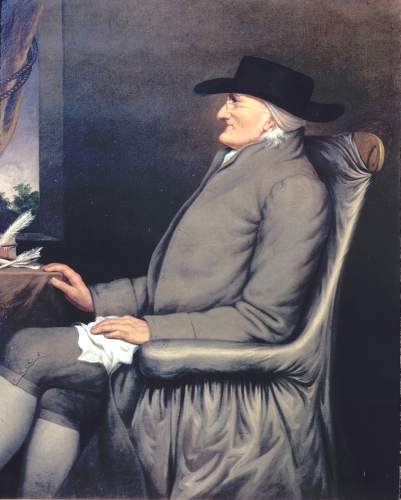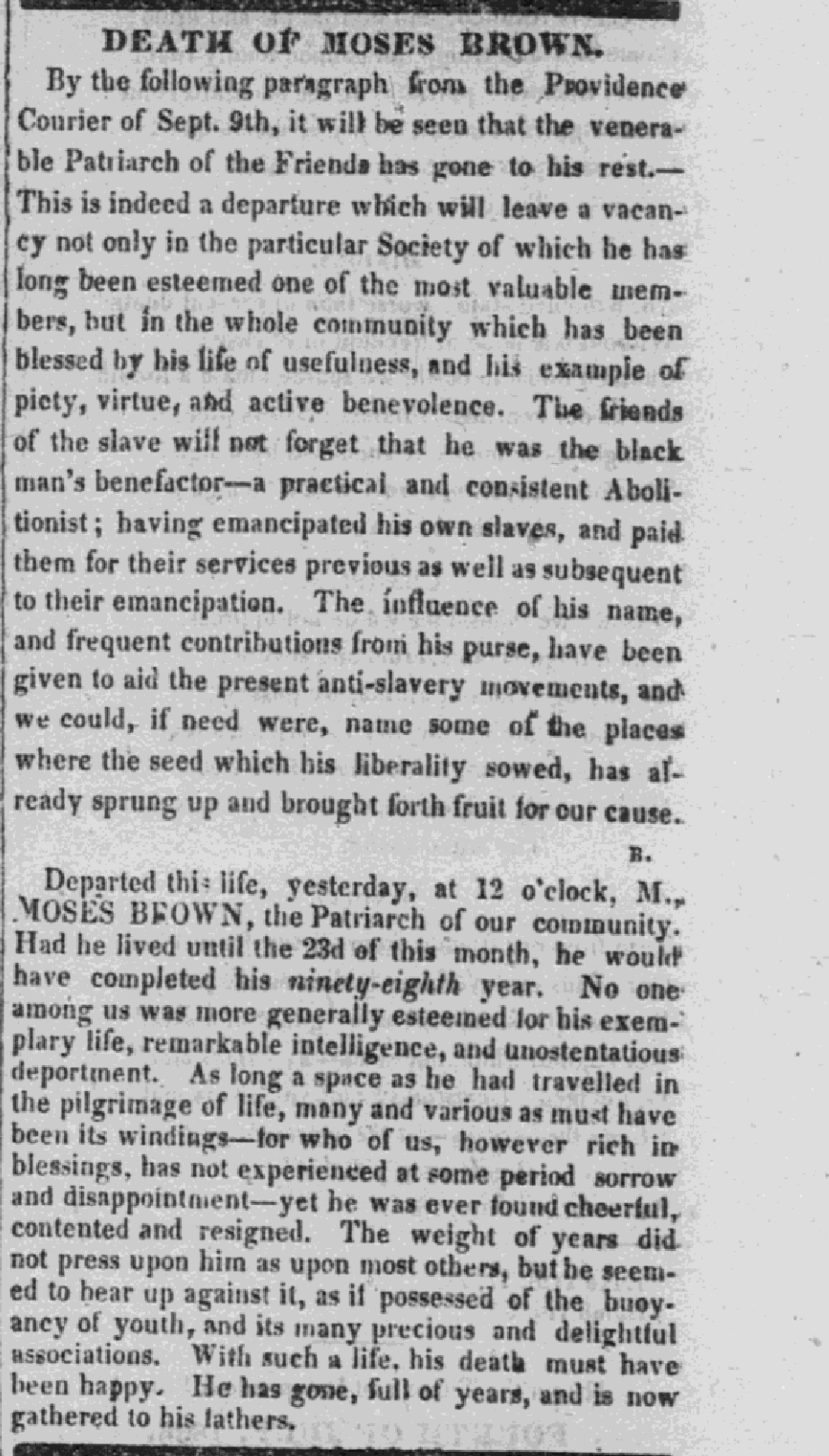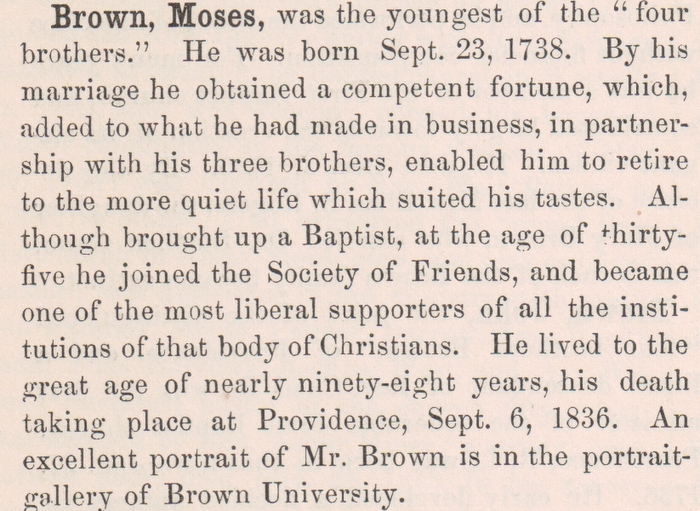From 1764 to 1771, Moses served in the Rhode Island General Assembly. After becoming a Quaker in 1773 at the age of thirty-five, Moses withdrew from partisan politics as well as the mercantile partnership with his brothers, and he manumitted all his slaves. He became one of the founding members of the Abolition Society of Providence and even sued his own brother, John Brown, under new anti-slavery laws following the Revolution. He donated a 43-acre farm, books, and $15,000 to found the co-educational Yearly Meeting Boarding School in Providence, today called the Moses Brown School.
After the Revolutionary War, Moses Brown became convinced that America needed to create economic independence from England and Europe by developing domestic industries and manufacturing. He was also interested in developing methods to employ Quakers and reduce any economic dependence on the slave trade the Quakers may have had. With his son-in-law William Almy and his cousin Smith Brown, Moses decided to invest in the textile industry which was just beginning in nearby Massachusetts. Together, in 1788 they started a business known as Almy & Brown for spinning and weaving cloth in Providence. As the business became established, Moses investigated more practical methods to spin thread and became interested in the English Arkwright method using water power to run spinning frames and carding machines. Moses Brown hired Samuel Slater, recently arrived from England with direct experience and knowledge of the Arkwright machines, to design the machinery for Almy & Brown, and founded what is today called "Slater Mill," making Almy and Brown the nation's first cotton manufacturing firm. Ironically, Moses Brown, the great humanitarian, became Rhode Island's first industrialist. He remained actively involved with Almy and Brown until his death at age 98.
From 1764 to 1771, Moses served in the Rhode Island General Assembly. After becoming a Quaker in 1773 at the age of thirty-five, Moses withdrew from partisan politics as well as the mercantile partnership with his brothers, and he manumitted all his slaves. He became one of the founding members of the Abolition Society of Providence and even sued his own brother, John Brown, under new anti-slavery laws following the Revolution. He donated a 43-acre farm, books, and $15,000 to found the co-educational Yearly Meeting Boarding School in Providence, today called the Moses Brown School.
After the Revolutionary War, Moses Brown became convinced that America needed to create economic independence from England and Europe by developing domestic industries and manufacturing. He was also interested in developing methods to employ Quakers and reduce any economic dependence on the slave trade the Quakers may have had. With his son-in-law William Almy and his cousin Smith Brown, Moses decided to invest in the textile industry which was just beginning in nearby Massachusetts. Together, in 1788 they started a business known as Almy & Brown for spinning and weaving cloth in Providence. As the business became established, Moses investigated more practical methods to spin thread and became interested in the English Arkwright method using water power to run spinning frames and carding machines. Moses Brown hired Samuel Slater, recently arrived from England with direct experience and knowledge of the Arkwright machines, to design the machinery for Almy & Brown, and founded what is today called "Slater Mill," making Almy and Brown the nation's first cotton manufacturing firm. Ironically, Moses Brown, the great humanitarian, became Rhode Island's first industrialist. He remained actively involved with Almy and Brown until his death at age 98.
Family Members
Advertisement
Records on Ancestry
Sponsored by Ancestry
Advertisement






















